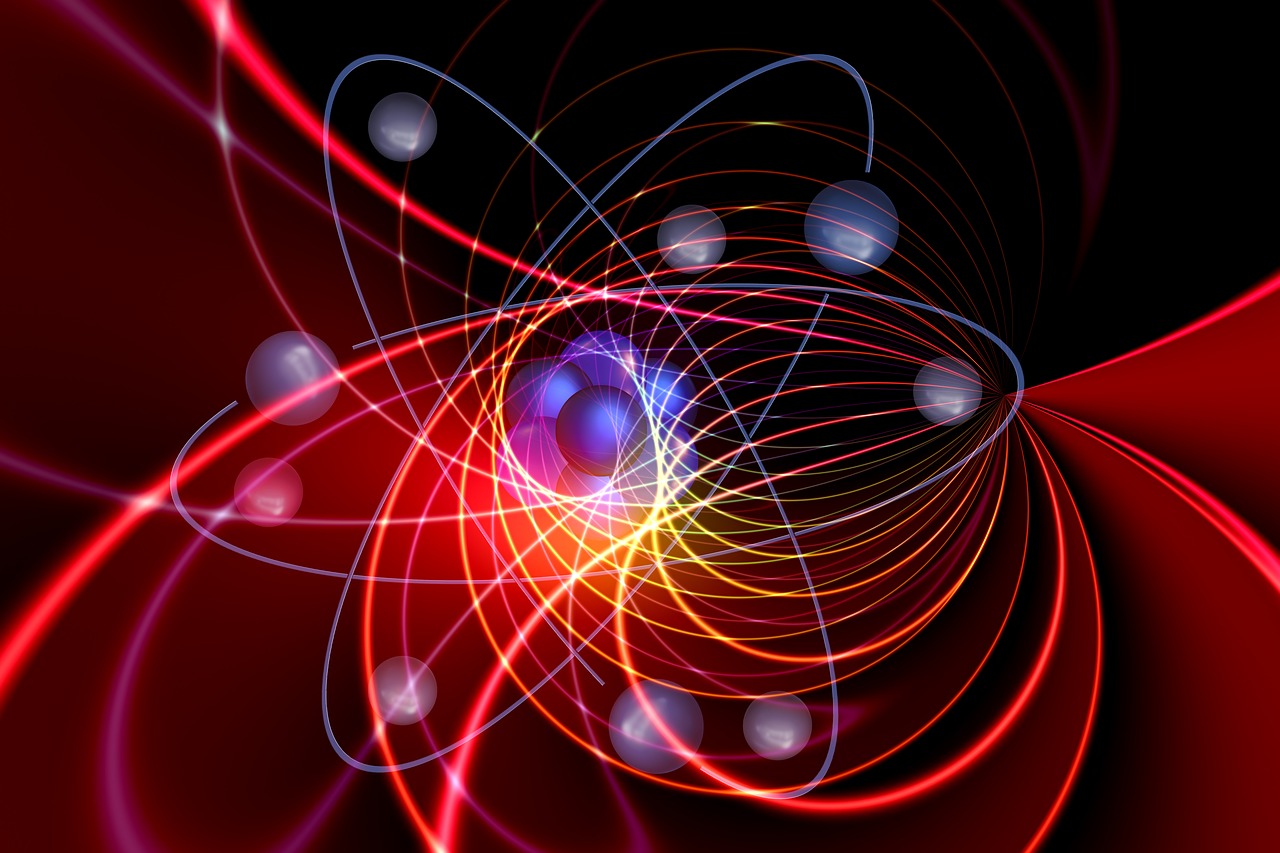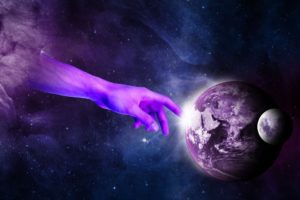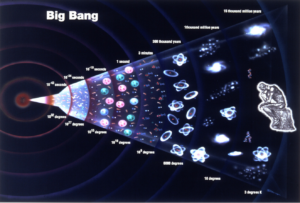The Kalam Cosmological Argument is an argument that I have spent many years studying and debating, and many articles on this website defend the premises against rebuttals from atheists (Click here if you want to check them out). Recently, on The Prosthylitize Or Apostatize Podcast, I was interviewed by David Pallmann and David Russel about the Leibnitzian and Cosmological Arguments (click here to listen). That episode was supposed to be a debate between me and David Johnson of The Skeptics and Seekers podcast on whether or not the universe had a beginning (or put another way, whether The Kalam Cosmological Argument’s second premise is true), however, my opponent got the dates mixed up and didn’t show up, so we planned on doing the debate the following week.
In that interview, Russel brought up a couple of eternal universe models that I had never heard of before. I was a bit flustered a tad embarrassed, but the truth was that I hadn’t been keeping up with developments in cosmology and debates on The Kalam argument for about a year and a half. For the past year and a half, I had been vigorously studying The Old Testament and Ancient Near Eastern cosmology with the purpose of producing a multi-part paper series exegeting and commenting on each chapter of what scholars call “The Primeval History Period” of Genesis (i.e Genesis 1-11). I also spent a little time looking into the eternal torment VS. annihilation debate regarding the doctrine of Hell and I ended up affirming annihilationism. Although it was a short break from my main area of specialization, evidently some developments in cosmology happened when I wasn’t looking.
If you, my dear reader, are a proponent of the Kalam Cosmological Argument, you may feel as overwhelmed as I did. You have to be so careful to keep up with all the science news so you can respond accordingly if and when you try to run the argument. You have to know every model out there lest your atheistic interlocutor throw it in your face and you’re left in a state of awkward silence. ….or do you? Fortunately, I don’t think so. If you just keep in mind the philosophical arguments for a beginning, even if you don’t know how to respond to an eternal universe model scientifically, you can still point out that it’s logically incoherent. I have found that all models ever proposed to suffer the problem of infinity. In this blog post, I will show you the different eternal universe models from past to present and show how none of them can stand up under philosophical scrutiny.1
So let’s look at them:
The Oscillating Universe Model
In 1922, Russian and Soviet physicist Alexander Friedmann published one of the first documented scientific proposals for an oscillating universe.2 This theory stated that the universe was going through an eternal cycle of expansions and contractions. The universe would expand from a tiny, dense point for billions and billions of years but would eventually recontract into the tiny dot that it expanded from on the previous go-round. This cycle of expansion and retraction, according to these theories, has been going on from eternity past and will continue to occur in eternity future. This theory, if true, would entail that the universe never began to exist, but is eternal.
This theory eventually fell out of favor with scientists for a number of reasons.3 However, even if it were perfectly fine physically, mathematically, and empirically, the model is logically impossible. Why? Because the model requires that we have traversed an infinite number of contractions and expansions prior to the present expansion. What’s wrong with that? Well, before this expansion could occur, a contraction and expansion prior to this one had to occur, and before that one could have occurred, expansion and contraction before it would have had to have occurred, and before that expansion could occur, there had to have been a prior time of expansion and contraction before it, and so on, and so on, and so on.
If the universe had existed forever, constantly expanding and retracting, then the big bang that occurred 14 billion years ago could not have occurred. If the big bang that occurred 14 billion years ago did not occur, then the universe wouldn’t have had the opportunity to develop to the way we see it today. In other words, the present moment would never have arrived. But, obviously, the present moment has arrived! We’re here! There was a beginning to expansion 14 billion years ago! This means that the universe couldn’t have been expanding and contracting from infinity past.
The universe began to exist. The most this theory could hope for is a finite amount of expansions and contractions, which would entail a universe with a beginning, which is not what proponents of this theory want to embrace. There were a finite number of big bangs at most, which means there was a first big bang, which means you haven’t escaped the need for a Creator.
Now, like a bad reboot of a bad TV show, more recent versions of the oscillating universe model have been proposed, such as the Conformal Cyclic Cosmology— “a general relativity based theory due to Roger Penrose in which the universe expands until all the matter decays and is turned to light—so there is nothing in the universe that has any time or distance scale associated with it. This permits it to become identical with the Big Bang, so starting the next cycle.”4 Penrose popularized this theory in his 2010 book Cycles of Time: An Extraordinary New View of the Universe. But while it may avoid scientific problems the original version had, it does not avoid the philosophical issue of an infinite regress.
Steady State Models
Dr. Jeff Zweerink explains that “The first couple of attempts to construct a steady state cosmology in the context of general relativity has connections with Albert Einstein himself. When Einstein first applied the equations of general relativity to the universe, the vast majority of his solutions resulted in either an expanding or contracting universe. In order to achieve a static, and thus steady state, universe he inserted the cosmological constant into the equations. However, Edwin Hubble’s discovery of an expanding universe showed that static models did not match measurements of the universe. After abandoning static models, one natural alternative is to propose that the universe expands but always appears the same. In order to achieve this property, the density of matter in the universe cannot change. Since expansion decreases the density if the amount of matter remains constant, Einstein noted that “for the density to remain constant new particles of matter must be continually formed.”5
Hermann Bondi, Thomas Gold, and Fred Hoyle were among the most famous proponents of this theory. Now, there were many scientific flaws with this theory, but like oscillating models, this view also suffers from the problem of actual infinities. Again, you have the problem of traversing an actually infinite number of past events. On the Steady State Theory, the universe has endured through an infinite number of past events, always expanding and always having more matter spontaneously created to fill in the gaps. This means that before the present moment arrived, there had to have been a moment before the present moment. Before the moment before the present moment arrived, there had to have been a moment before it, and before that moment could arise, the moment before it had to have arisen, and before that moment could have arisen, the moment before it had to have arisen, and so on, and so on. The present state of the universe could never have been reached if an infinite number of physical states in time preceded it. In fact, no physical state and no moment of time in the entire infinite series could have come to pass. Each state in the infinite series would be preceded by an infinite number of prior states. So not only could the present state of the universe not have come about, but no state prior to this could have come about.
Ergo, The Steady State Universe model is logically incoherent.
Mother Universe
It was formulated by Lee Smolin of the Perimeter Institute for Theoretical Physics in Waterloo, Canada. In 1992.6 The mother universe theory says that perhaps The Big Bang wasn’t the beginning of all physical reality, but only a part of physical reality. Our universe is just one bubble being formed in a sea of “baby universes” which are given existence by a much wider “mother universe”. Hence, the proponent of this view argues the premise 2 of The Kalam Cosmological Argument is false if by “the universe began to exist”, we mean (and we do) all physical reality whatsoever instead of just the birth of this baby universe.
I have written elsewhere that there’s a problem with The Mother Universe Model that puts the atheist in an unescapable dilemma that requires the Mother Universe to have a beginning. But again, we’re going for the infinite jugular here. We’re going to slice the jugulars of all these theories with philosophy. Go to another article to see my scientific refutation (e.g “Q&A: Does The Cause Of The Universe Have to Be Spaceless, Timeless, and Immaterial?”)
So let’s go for the philosophical jugular! On this model, the mother universe has existed from eternity past and will exist into eternity future. This means that an infinite amount of moments transpired before the moment within the mother universe in which it gave birth to the baby universe we live in. Given what I said in the previous 2 subheaders, I think you can see the problem with traversing an infinite number of past moments. The Mother Universe must have a beginning, and ergo the Mother universe must have transcendent cause.
The atheist cannot escape God merely by positing that the mother is itself a baby universe from some sort of Grandmother universe, for then the problem is merely pushed back a notch. And you can’t keep positing higher and higher levels of great grandmother universes, because traversing infinite series are impossible! There had to be a first universe, a universe caused by something outside of all time and ergo not liable to the infinite regression problem. Something like God.
Furthermore, even if actual infinities could be addressed, there are good reasons to think they cannot exist, period. J.P Moreland nicely illustrates this in his book Scaling The Secular City. Moreland wrote; “Imagine a library with an actually infinite number of books. Suppose further that there is an infinite number of red books and an infinite number of black books in the library. Does it really make sense to say that there are as many black books in the library as there are red and black books together? Surely not. Furthermore, I could withdraw all the black books and not change the total withholding of the library. Let us also assume that each book has an actually infinte number of pages. There would be just as many pages in the first book in the libary as there are in the entire, infinite collection. If someone read the first book, she would read just as many pages as someone who read every page of every book in the library. … Some unreasonable consequences … follow if actual infinites can really exist.” 7
So we can run the following syllogism.
1: An actually infinite number of things cannot exist.
2: An eternally old mother universe requires an actually existing number of things (i.e an infinite number of baby universes and past moments in time).
3: Therefore, an eternally old mother universe cannot exist.
Premise 1 is backed up by the incoherence problem in the J.P Moreland quote. Premise 2 is true by definition. So the conclusion follows. The mother universe, grandmother universe, great grandmother universe, must have had a beginning.
The Carroll-Chen Model
STAGE 2: Mother Universe bounces at a minimal size.
STAGE 3: Mother Universe expands; eventually her content (matter, black holes etc.) entropically dissolves into a low-heat energy blanket.
STAGE 4: The energy-blanket is soil for chance fluctuations to produce baby universes, like ours. See elaboration on these stages below.
Conclusion
I have come to the conclusion that there never will be a solid scientific theory that avoids the philosophical problems of an infinite regress and the absurdities of existing actual infinities. I believe the universe (by this, I mean all physical reality) had a beginning not merely on the basis of powerful scientific evidence, but on philosophical arguments as well. And I not only believe that the universe is not past eternal, but I have come to believe that such a notion is not even metaphysically possible.
NOTES
1: They don’t stand up under scientific scrutiny either, which is why many of them have been almost universally abandoned with the exception of the more recent proposals. I don’t advise that you neglect being able to refute these models via scientific evidence, but if you don’t know what the scientific flaws are, you can still win the debate by showing how, whatever the science may or may not say, the model in question is incoherent and ergo cannot be true.
2: A. Friedmann, “On the Curvature of Space,” General Relativity and Gravitation 31 (December 1999): 1991–2000, https://doi.org/10.1023/A:1026751225741. Reference for original German article found at https://doi.org/10.1007/BF01332580.
3: Since this article is all about showing the philosophical incoherence of these models, I won’t show what scientific evidence causes the oscillating model or any other model to fall out of favor. If you’re interested, check out my blog post “Is The Big Bang Really The Origin Of The Universe?”
4: This is a quote from Wikipedia. –> https://en.wikipedia.org/wiki/Cyclic_model
5: Zweerink, Jeff. Escaping the Beginning?: Confronting Challenges to the Universe’s Origin (Kindle Locations 930-936). RTB Press. Kindle Edition.
7: J.P Moreland, from “Scaling The Secular City”.
8: “Spontaneous Inflation and the Origin of the Arrow of Time,” [arXiv:hep-th/0410270] (2004). They subsequently proffered an alternative modified version through 2006-2010.
9: https://www.reasonablefaith.org/videos/debates/craig-vs.-carroll-new-orleans/
10: If everything is happening an infinite number of times, then what is you’re dealing with ratios of infinity: infinity.
• Christopher Weaver: “[t]his wreaks havoc on probability judgments. If your sample space is infinite, it does not appear possible to have a well-defined probability measure to underwrite your probability and likelihood judgments. This problem of infinities and probabilities in eternal inflation-based cosmologies is well-known. However, it is also well-known that there is no current satisfactory solution to the problem.”
Share this:
- Click to share on Facebook (Opens in new window) Facebook
- Click to share on X (Opens in new window) X
- Click to print (Opens in new window) Print
- Click to email a link to a friend (Opens in new window) Email
- Click to share on Pinterest (Opens in new window) Pinterest
- Click to share on Reddit (Opens in new window) Reddit
- Click to share on LinkedIn (Opens in new window) LinkedIn
- Click to share on Tumblr (Opens in new window) Tumblr
Discover more from Cerebral Faith
Subscribe to get the latest posts sent to your email.




